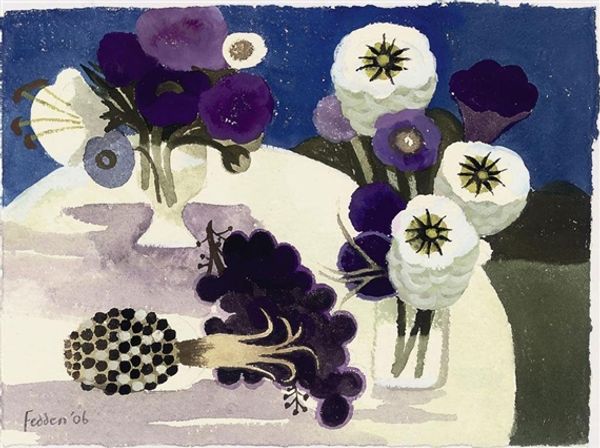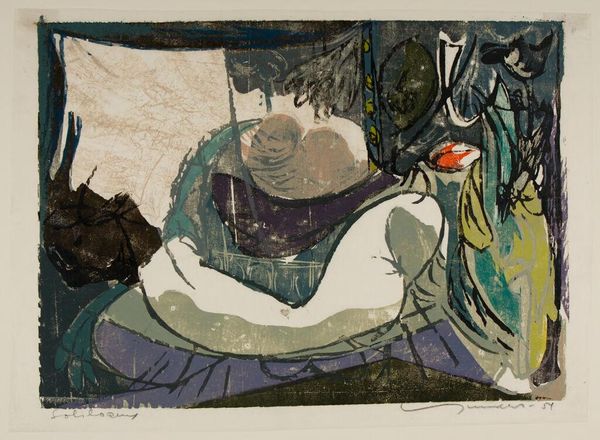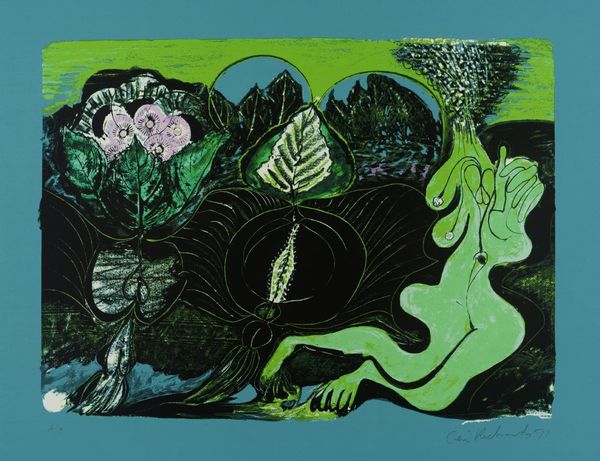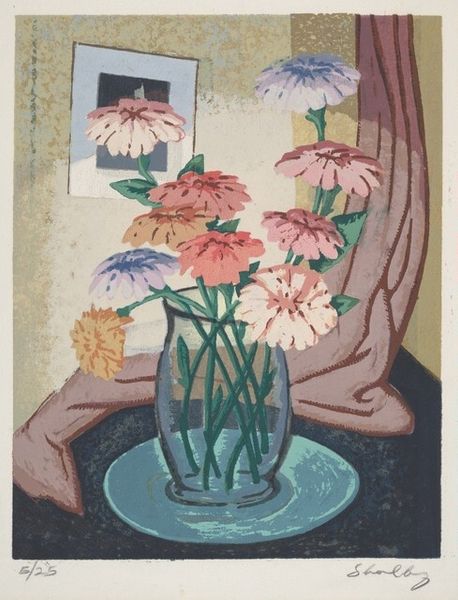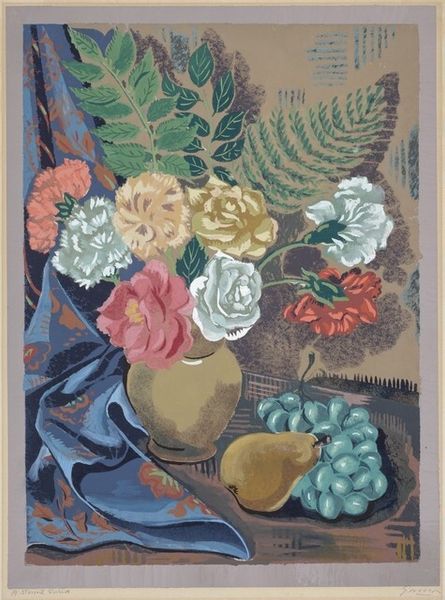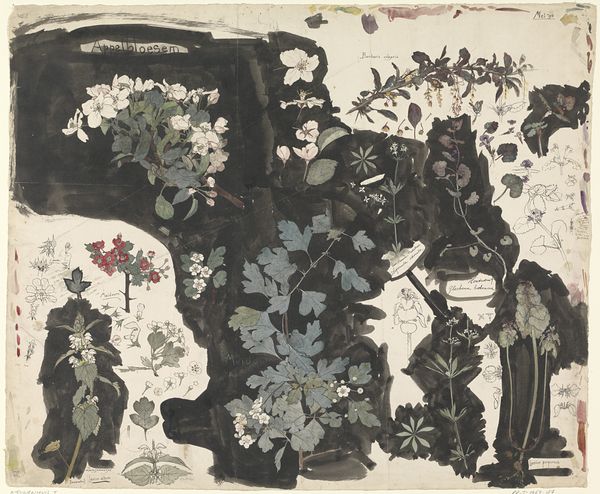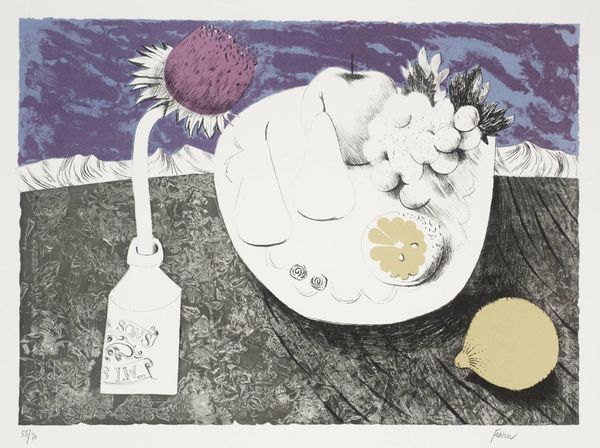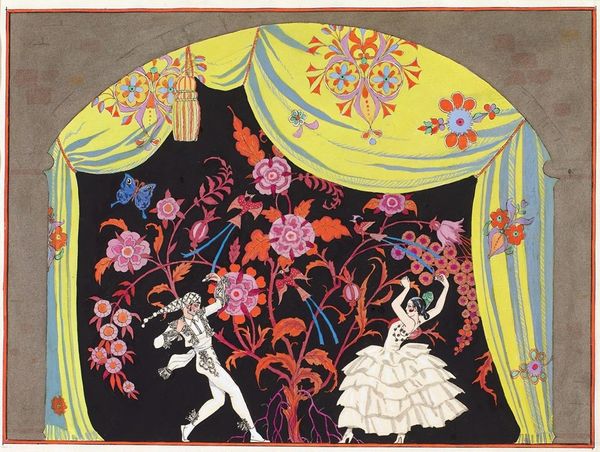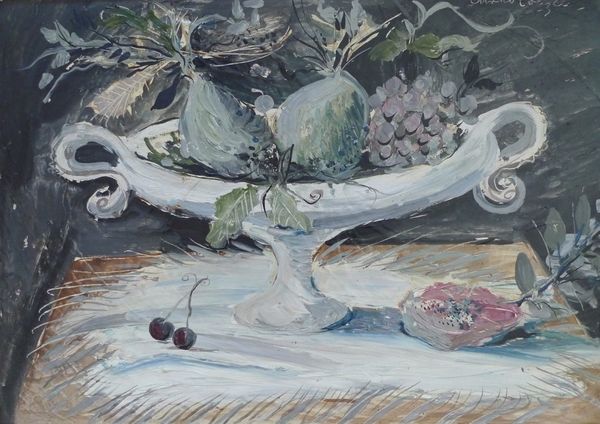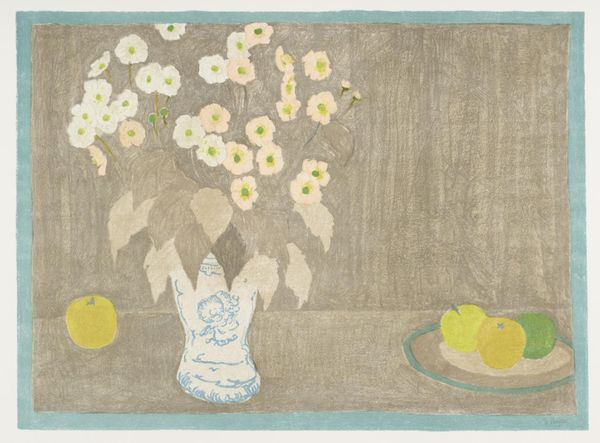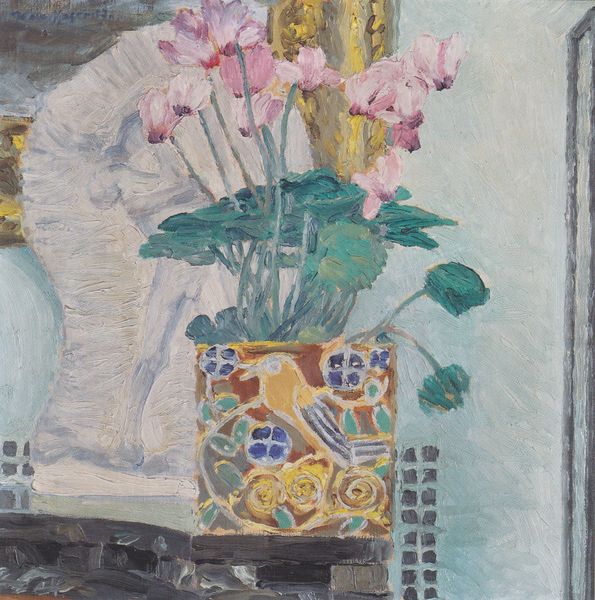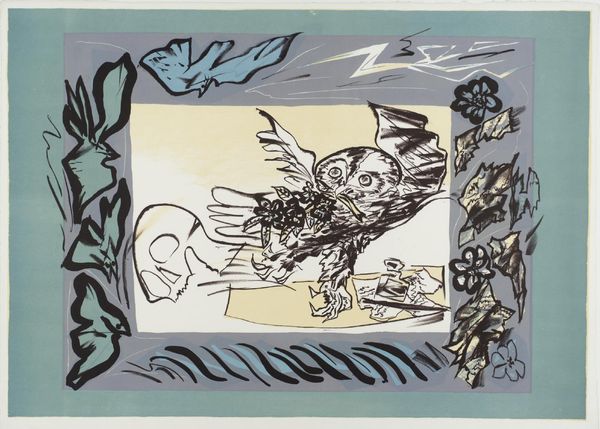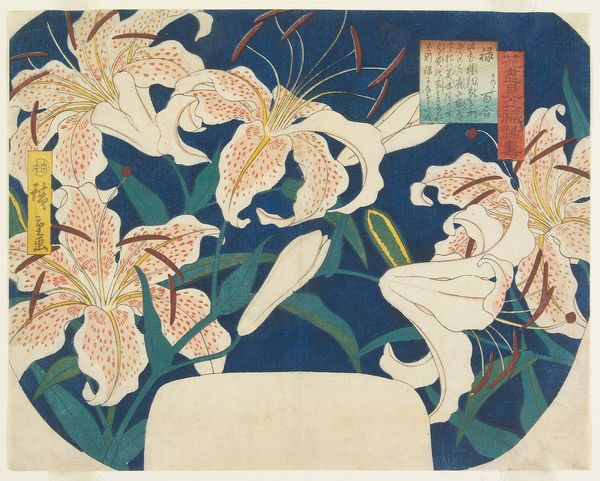
graphic-art, print
#
graphic-art
# print
#
flat colour
#
modernism
Dimensions: Image: 278 x 344 mm Sheet: 330 x 395 mm
Copyright: National Gallery of Art: CC0 1.0
Editor: So here we have Guy MacCoy's "Purple Flowers" from 1942, a print with graphic-art elements. What strikes me is the limited palette, almost a muted feel. What stands out to you in this work? Curator: What fascinates me is how MacCoy uses the print medium itself. Look at the flattening of space, achieved through discrete color blocks. He foregrounds the labor of production, the deliberate separation of color layers, challenging the illusionism we often associate with "high art." Do you notice how the visible texture of the printmaking process adds another layer? Editor: It's like the process is part of the art itself. How does this relate to its historical context? Curator: Exactly. In the 1940s, there was an increased interest in democratizing art, making it more accessible. Printmaking played a crucial role in this, enabling mass production and distribution. This piece hints at that intersection of art and accessibility, moving away from unique, precious objects and highlighting the act of making, of production. How do the domestic objects—the flowers, the fruit—fit into that narrative? Editor: I guess that links it back to daily life, ordinary experiences. Almost celebrating the mundane. Curator: Precisely. Instead of elevating a subject, the process becomes a subject, prompting the viewer to consider labor, materials, and social context alongside, or even instead of, traditional notions of beauty. What did you take away from this discussion? Editor: I never really thought about prints in this way, about the making itself as being so central to the work's message. Curator: Absolutely, this reframing challenges our ideas of art and encourages a deeper understanding of art's materiality.
Comments
No comments
Be the first to comment and join the conversation on the ultimate creative platform.
